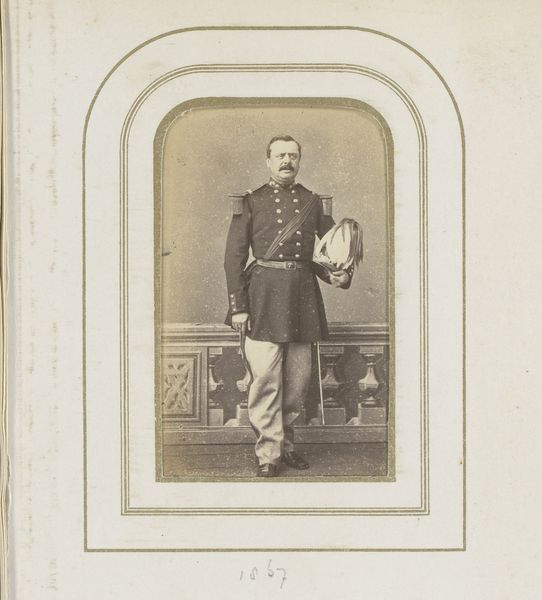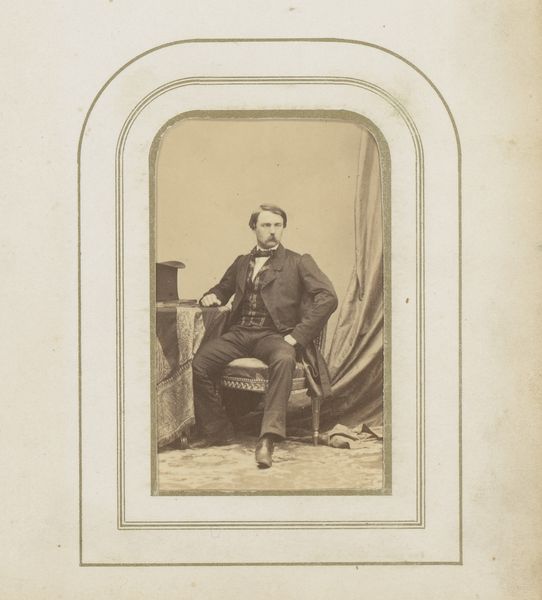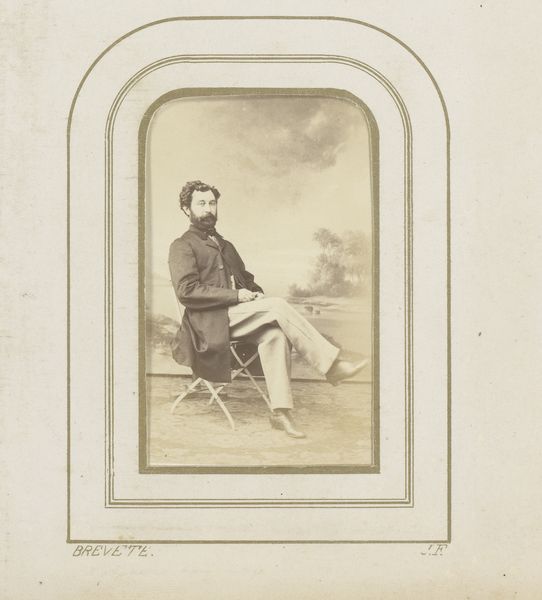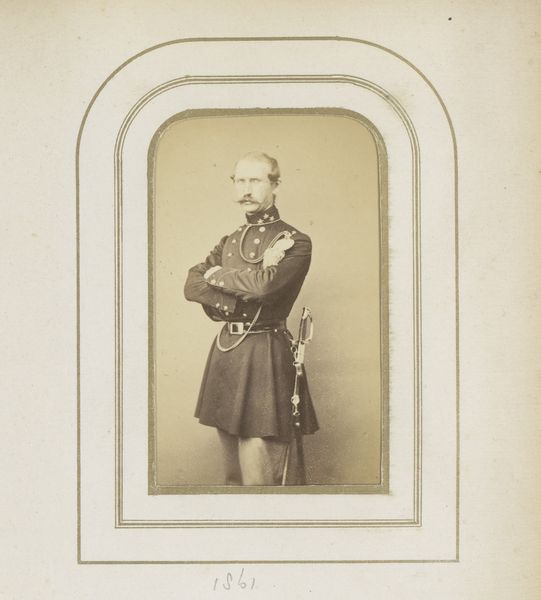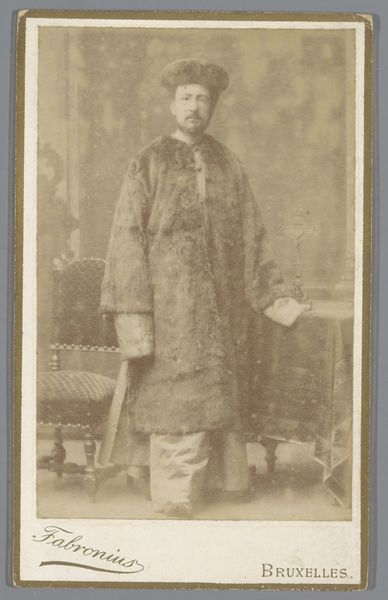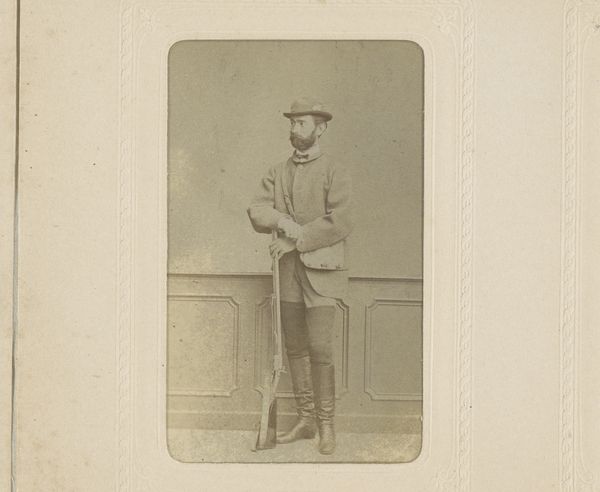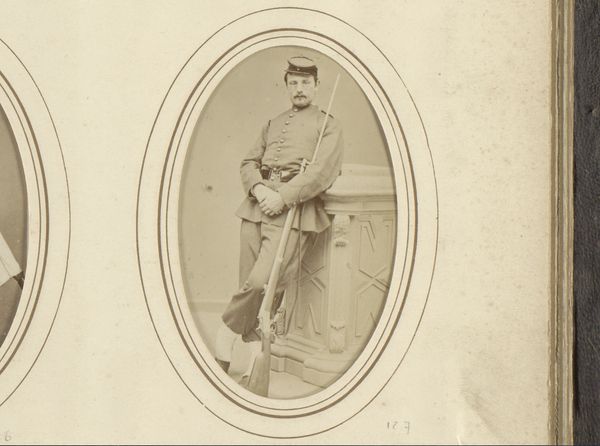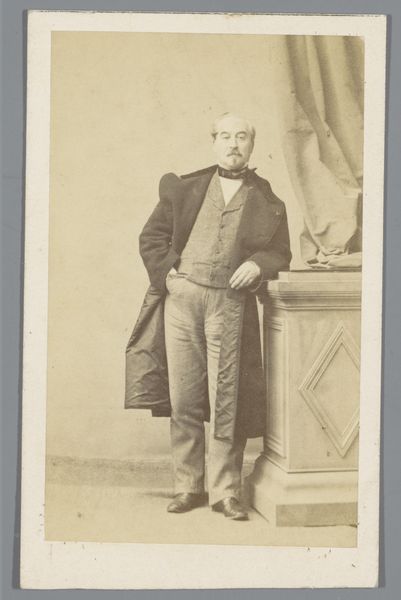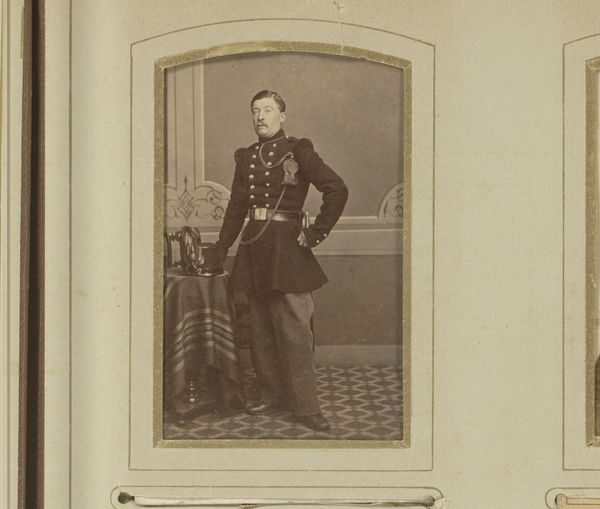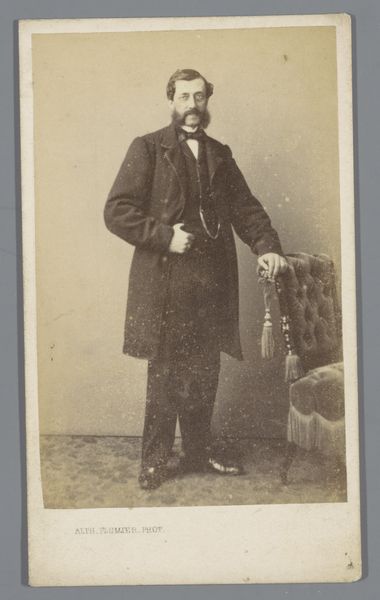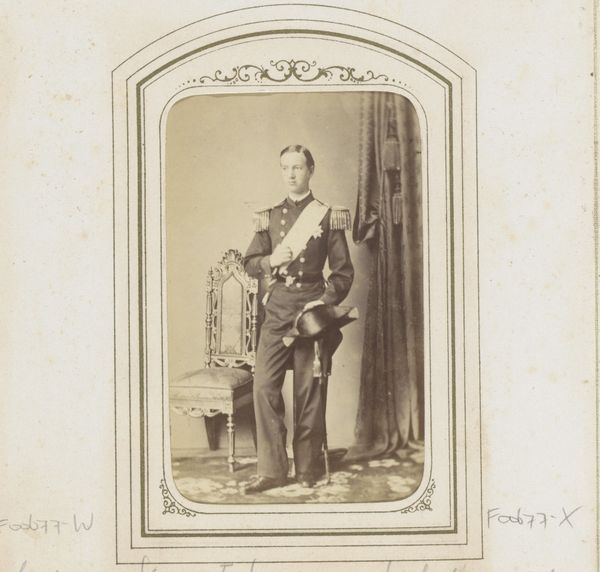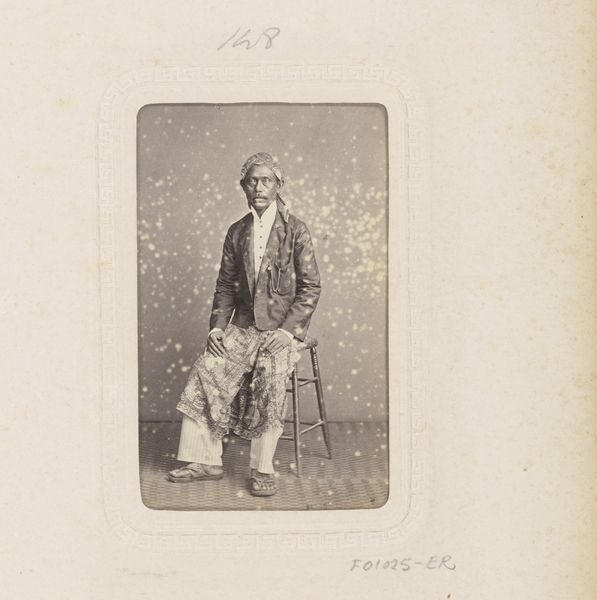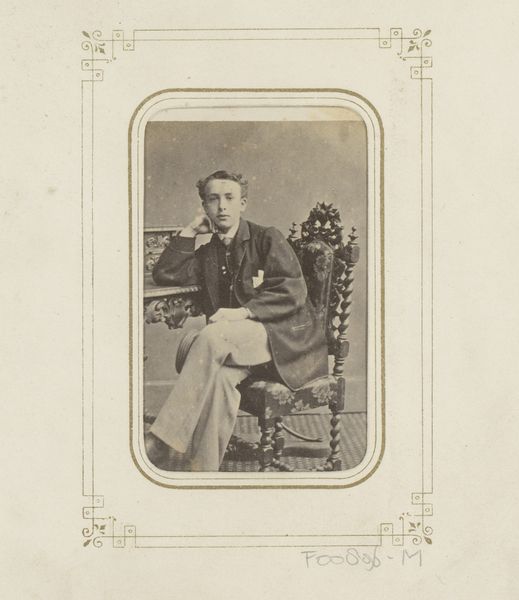
#
aged paper
#
toned paper
#
vintage
#
photo restoration
#
charcoal drawing
#
historical photography
#
old-timey
#
19th century
#
golden font
#
watercolor
Dimensions: height 83 mm, width 50 mm
Copyright: Rijks Museum: Open Domain
Curator: Immediately, the sepia tones create a strong sense of nostalgia. It’s like peering through a time portal. Editor: Indeed. This is "Portret van een man in uniform met pet en wandelstok," dating from 1860 to 1865, attributed to Prosper Bevierre. The medium appears to be a photograph with some kind of hand-applied toning, mounted on cardstock with a decorative border. What strikes you formally? Curator: The composition, while typical for a portrait of this era, uses diagonals in the figure’s pose and sword placement, which enlivens what could be static. Notice the subject’s confident stance, it conveys an air of authority, maybe even defiance, with the walking stick hinting that the officer may have suffered a serious leg injury. Editor: I’m drawn to how this portrait, as an artifact, exists within a network of production and consumption. Consider the materiality—the processed paper, the dyes used for the sepia tone, the very act of photographic reproduction making portraiture available to a wider section of society. We should also note how it functions within the military structure of the 1860s: mass-produced uniforms, standardised ranks indicated through specific accessories, the walking stick alluding to the military industry of healthcare and recovery. What narrative do these processes, materials, and allusions create? Curator: An interesting point! Looking at it more closely, it isn't just a generic military portrait; it may evoke a mix of power and vulnerability. There is a fragility in its presentation – mounted, bordered, presumably displayed and viewed privately or by a specific community. How the very form of photography changed visual representation…the portrait becomes an extension of the man, both in presence and status. Editor: Precisely! This connects the work, not just to individual artistic vision or skill, but to broader socio-economic transformations. Think about how the mass production and distribution of this medium helped visualize war efforts during times of immense global conflict. Curator: Ultimately, the photograph exists as an intimate and, perhaps propagandist, glimpse into a life. It gives you an aesthetic sensation from its monochromatic scale as well as its subject and historical content. Editor: So it invites us to examine not only the man but also the forces and industries that made his image—and perhaps his role—possible.
Comments
No comments
Be the first to comment and join the conversation on the ultimate creative platform.
